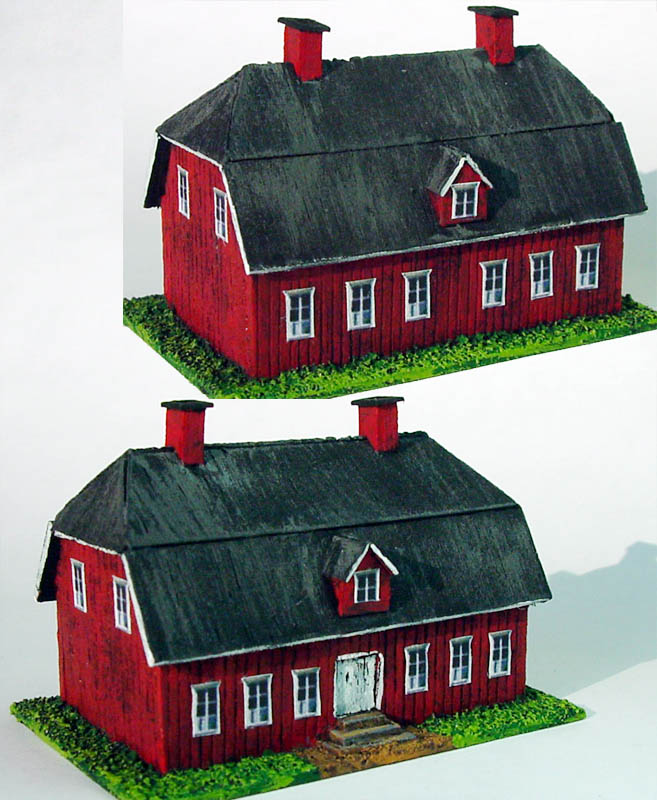
Painting old Finnish buildings is quite straightforward; red or grey in most cases. Practically all utility building were left unpainted and the wood would turn grey in a few years, over the years it would gather some brown hues on it.
Start by flocking the bases with fine sand and undercoating with black.

This building might as well be yellow, but as it presents a real world building, which is red, then this is red too.
Walls are drybrushed with rich, darkish red (e.g. Red Gore) with appropriate highlights. The roof is drybrushed with varying levels of grey. All black roofs present tar coated roofs and tar isn't actually black when spread on a roof and exposed to sun - it turns dark brown. It isn't apparent from the picture, but the roof contains also brown hues, which makes the model more realistic.
The roof edges and also door and window frames were painted white. In the model, the windows are printed pictures, which saves the trouble of painting them. Because of the contrast brought by these white frames, the highlights should not be brought to white on walls and especially not on the roofs.
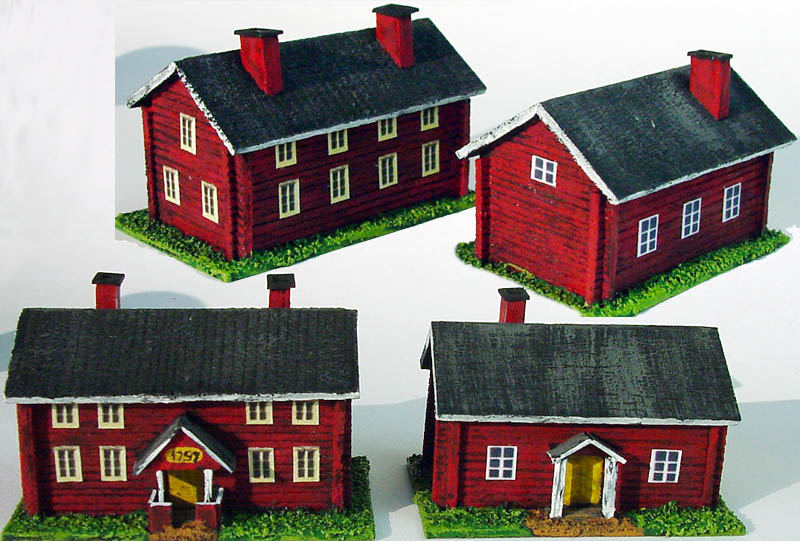
Here we have more red buildings, some with yellow doors.
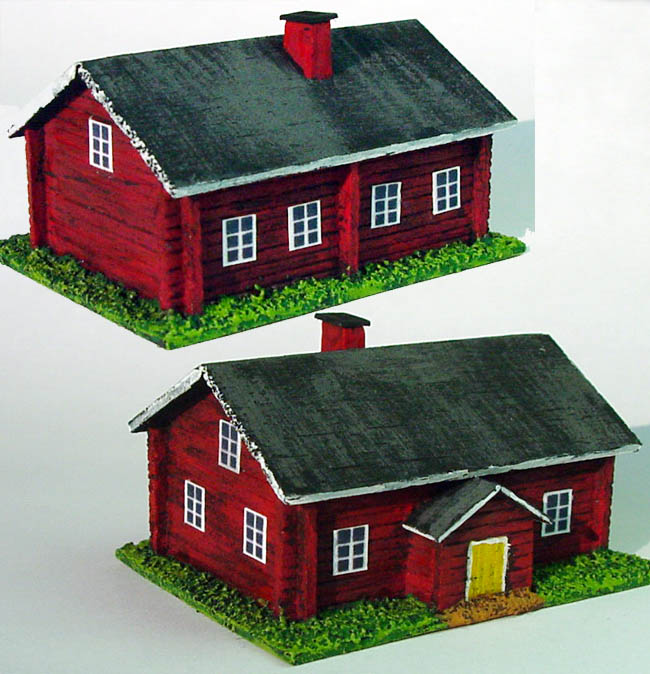
Even though the real buildings weren't painted, it doesn't relieve you from that task.
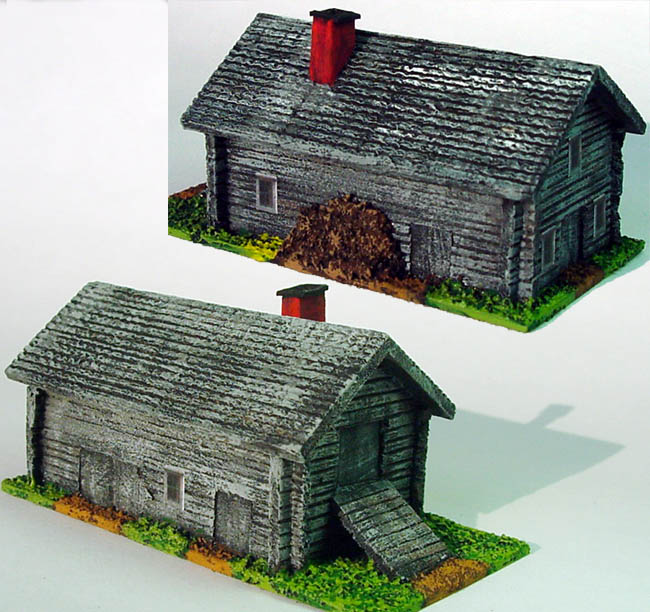
Most buildings are drybrushed with greys, up to white highlights and with those brown hues. If the building is brand new, then the colors would be sand color with e.g. pale skin hightlights.
The chimney is red because it's made from red bricks.
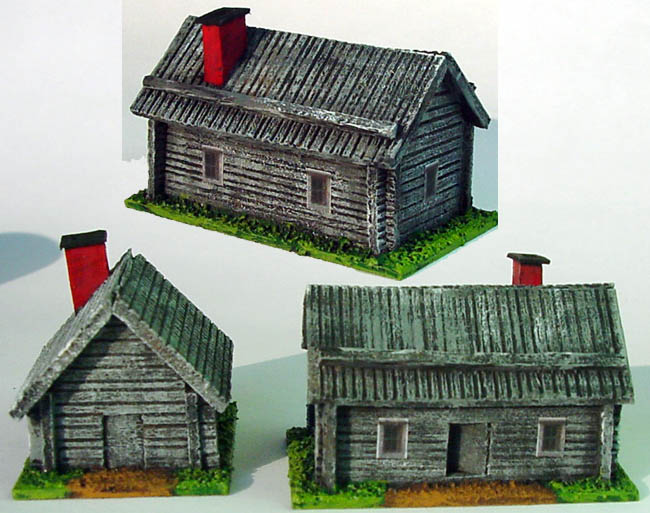
The bigger building here is a house, but as it presents an unpainted building, the weather has treated it like the others.

More utility buildings. They could use more brown, but that should not be overdone. Even though the real world examples presented on other pages have a lot of brown, we have to remember that those buildings are well over hundred years olds and the brown effect increases with age. A 5-10 year old building would be mostly just grey.